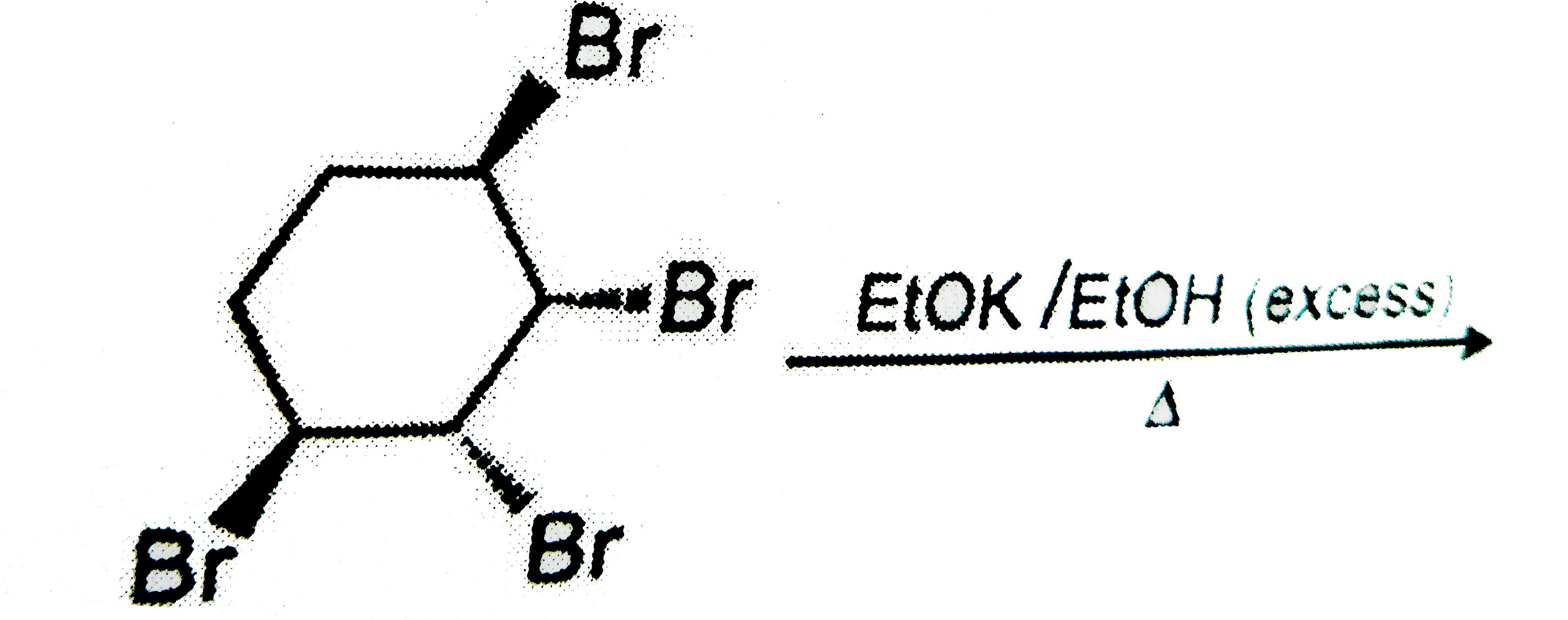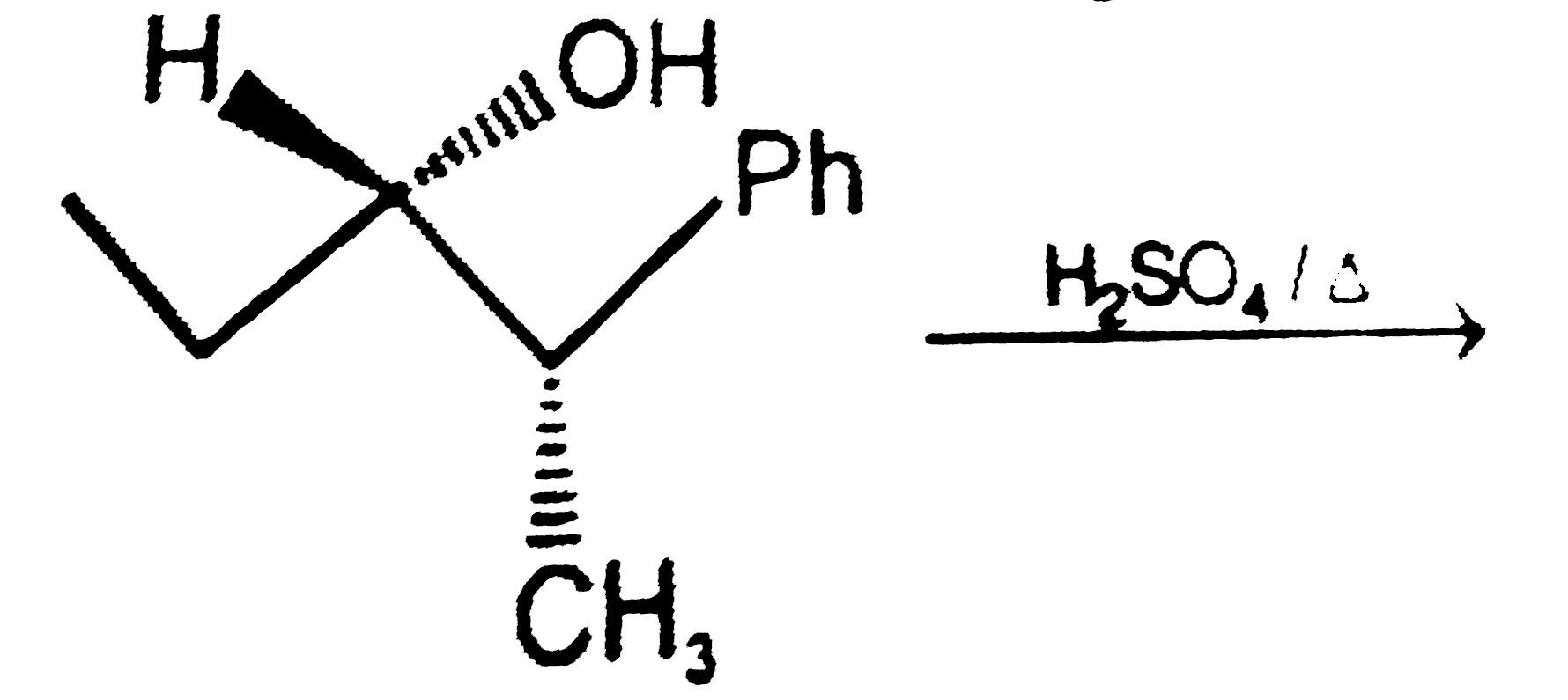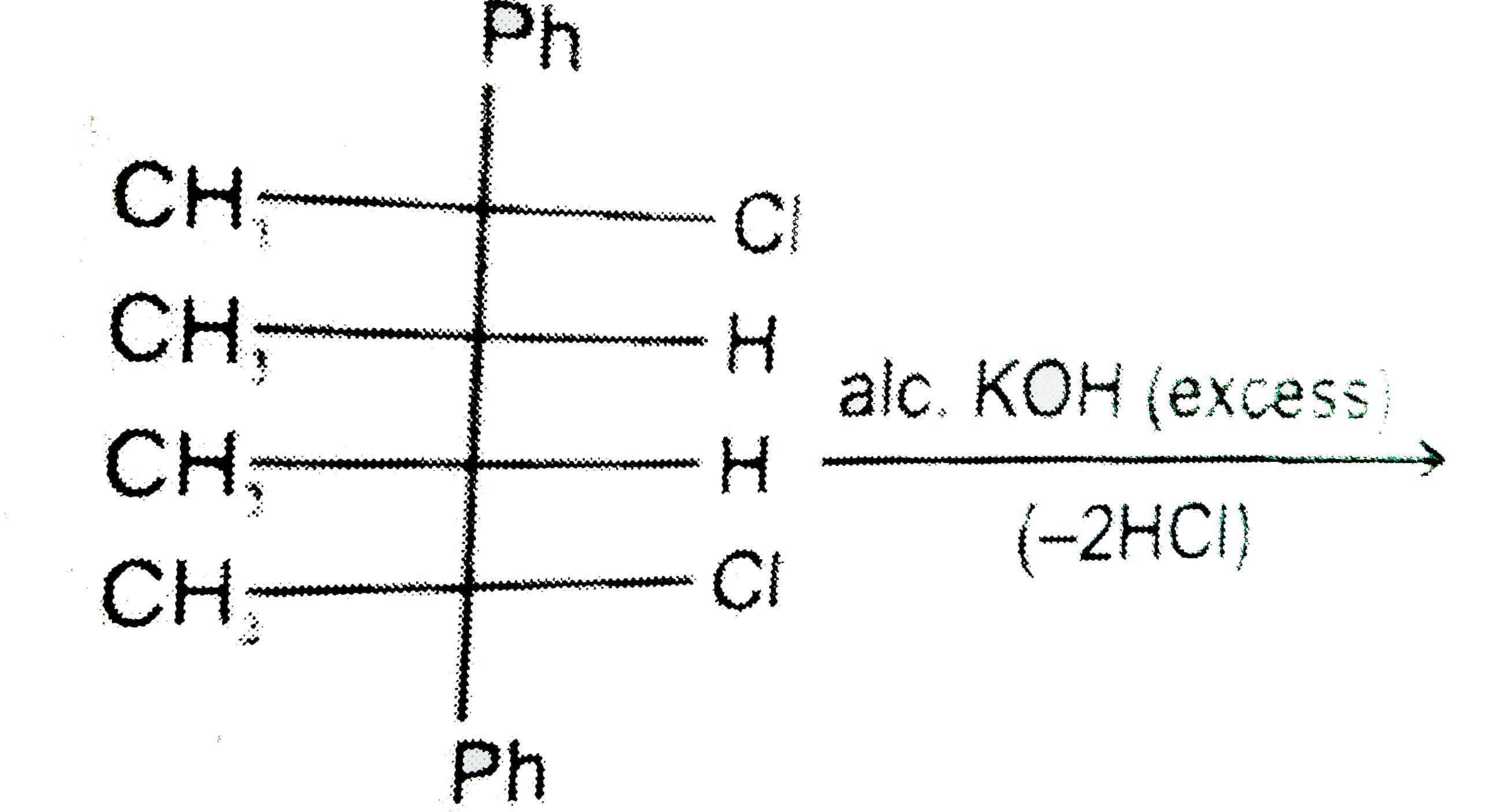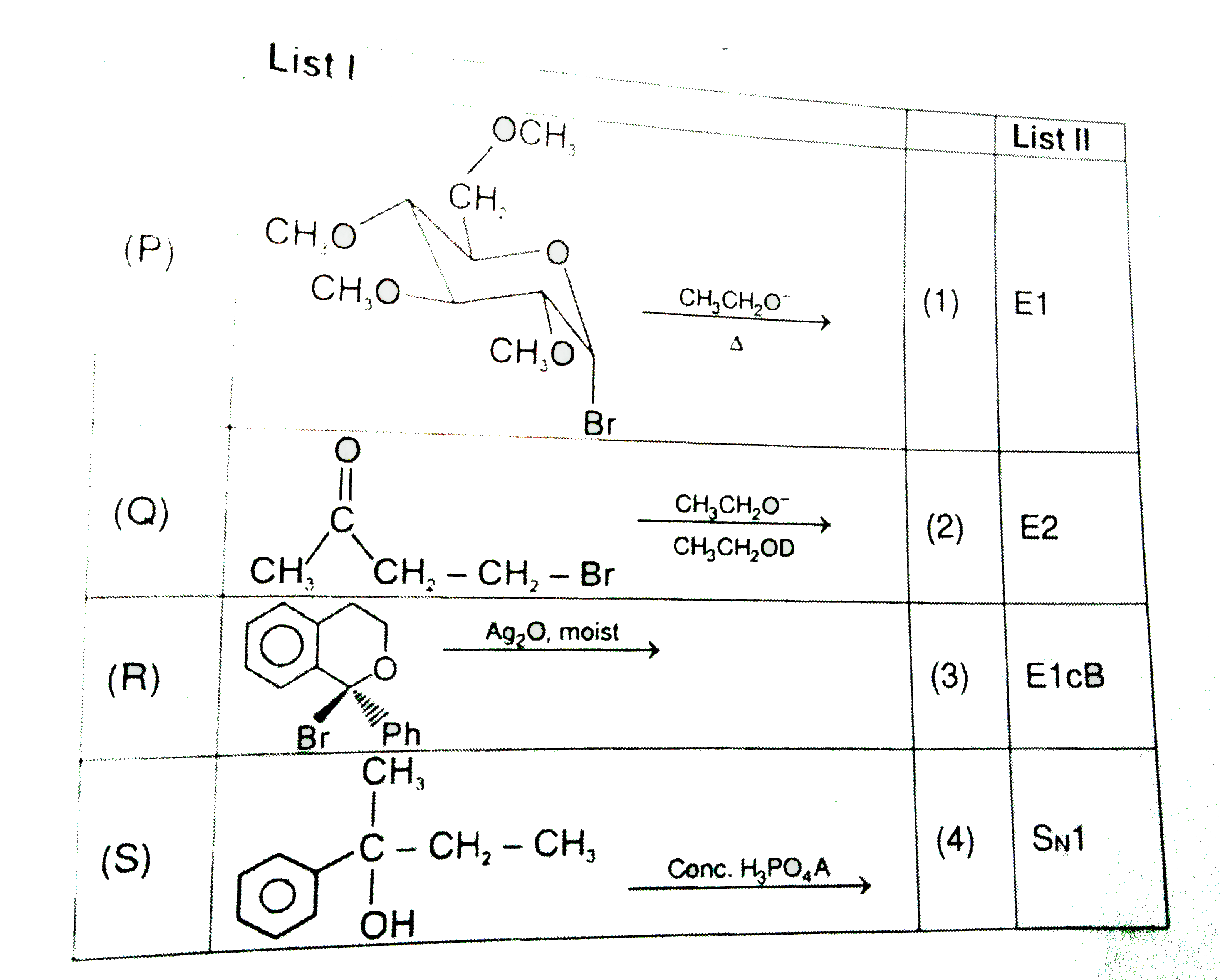Complete Solutions to APSP PART-3 of chapter ORGANIC REACTION MECHANISMS-IV of Class 11 book with complete answers and questions
| Class 11 | CHEMISTRY |
| Chapter | ORGANIC REACTION MECHANISMS-IV |
| RESONANCE NEW | APSP PART-3 |
| Number Of Questions | 22 |
| Academic Year | 2023-24 |
Rate of Bimolecular elimination (E2) reaction for the following :

View SolutionWhich is incorrect about alkyl bromide having molecular formula `C_5H_11Br`
View SolutionThe compound 'X' is

View SolutionWhen the all-cis isomer of `C_6H_6Cl_6` (1,2,3,4,5,6 -Hexachlorohexane) is heated with alc. KOH, the most probable product is :
View Solution`CH_2Ounderset(H_3O^(o+))overset(CHD_2MgI)toX underset(Delta)overset(Conc.H_2SO_4)toY`
In the above reaction compound X & Y respectively will be
View SolutionMajor product of the given reaction is :

View Solution
The product is -
View SolutionWhich one of the following hyxachlorocyclohexane is least reactive and which one is most reactive in `E2` reactions with a strong base fro dehydrohalogenation.

View SolutionIn which of the following reactions the correct major products are mentioned
View SolutionWhen ethyl bromide is added to potassium t-butoxide, the product is ethyl t-butyl ether.
`underset("ethyl bromide")(CH_3CH_2-Br)+underset("ptassium t-butoxide")((CH_3)_3C -OK)tounderset("ethyl t-butyl")((CH_3)_3C-O)-underset("ether")(CH_2CH_3)`
Which of the following statements is/are correct ?
View SolutionWhich of the following statement are true ?
View SolutionWhich of the following reaction has the correct major product .
View SolutionWhich of the following statements is/are correct for alkyl halide ?
View SolutionThe correct statements about the following reaction are

[Hint: `Al_2O_3` gives satyzeff's product without any rearrangement]
View SolutionThe order of following reaction is :

View SolutionTotal number of alkenes obtained by dehydration of 3,4-diethylhexan-2-ol in acidic medium ?
View Solution
Report your answer as XY
View SolutionThe number of products (stereoisomers) formed in the following reaction is (consider only major product)

View SolutionThe elimination reactions mainly involve three mechanism E1,E2 and E1cB. If the leaving group departs before `beta`-proton (`H^Theta` ion) then it is E1 mechanism. If proton is taken off first before leaving group it is E1cB mechanism.The pure E2 involves both `beta`-Hydrogen and leaving group departing simutaneously. If acidity of `beta`-Hydrogen increases and leaving group ability decreases then E1cB mechanism increases.

Product P is
View SolutionThe elimination reactions mainly involve three mechanism E1,E2 and E1cB. If the leaving group departs before `beta`-proton (`H^Theta` ion) then it is E1 mechanism. If proton is taken off first before leaving group it is E1cB mechanism.The pure E2 involves both `beta`-Hydrogen and leaving group departing simutaneously. If acidity of `beta`-Hydrogen increases and leaving group ability decreases then E1cB mechanism increases.

The alkene formed as a major product in the above elimination reaction is
View SolutionThe elimination reactions mainly involve three mechanism E1,E2 and E1cB. If the leaving group departs before `beta`-proton (`H^t=Theta` ion) then it is E1 mechanism. If proton is taken off first before leaving group it is E1cB mechanism.The pure E2 involves both `beta`-Hydrogen and leaving group departing simutaneously. If acidity of `beta`-Hydrogen increases and leaving group ability decreases then E1cB mechanism increases.
Which of the following substrate will undergo fastest reaction through E1cB route
View SolutionMatch List I (Reaction) with List II (Type of reaction ) and select the correct answer using the code given below the lists :

View Solution
APSP PART-3 questions and complete solutions for chapter ORGANIC REACTION MECHANISMS-IV of RESONANCE ENGLISH of Class 11